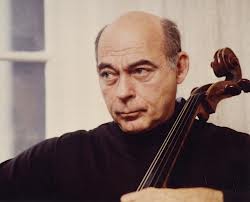
A symphony is a dynamic, unfolding process. Within its formal structure small musical motives develop and evolve, constantly searching for an ultimate goal. On the largest level, the drama of a symphony might remind you of a baseball game. Through a series of exciting and unpredictable musical “plays,” it moves away from home and returns.
To get a sense of this drama, listen to the first movement of Mozart’s Symphony No. 40 (Molto allegro). Pay attention to the opening motive and how it develops. At the same time, can you perceive a larger formal structure?
Symphony No. 40 in G minor, K. 550…Wolfgang Amadeus Mozart (1756-1791)
[ordered_list style=”decimal”]
- Molto allegro -starts at 0:42
- Andante -starts at 8:28
- Menuetto. Allegretto-Trio -starts at 22:33
- Finale. Allegro assai -starts at 26:10
[/ordered_list]
https://www.youtube.com/watch?v=2HbMzu1aQW8
[typography font=”Cantarell” size=”28″ size_format=”px”]Motivic Development[/typography]
Could you hear the restless opening theme develop and search for a resolution? There are short term goals along the way, but the music never really rests until the final note. If you listen carefully, you’ll hear the opening theme pop up in unexpected places. For example, listen to the musical conversation between the clarinets and bassoons at 2:11. This motive is the seed from which the entire first movement grows. One musical cell spins to the next and every note seems inevitable. Motivic development is essential to the symphony, as Leonard Bernstein discusses in What Makes Music Symphonic?
[typography font=”Cantarell” size=”28″ size_format=”px”]Circling the Bases with Sonata Form[/typography]
This first movement is a great example of a common musical structure called sonata form. Conductor Robert Spano offers a brief and informal introduction to sonata form here. Also watch Leonard Bernstein’s What is Sonata Form?
Sonata form is made up of three main sections: the exposition, development and recapitulation. In the exposition, motivic material is introduced for the first time. We start out in a “home” key, but then begin to move away. The goal of the rest of the movement is to find a way back home. The development section is the most harmonically unstable. Here, the composer plays around with the motives, embellishing them in many adventurous ways. The recapitulation returns home. It’s the music of the exposition, but this time we must avoid being pulled to a new key.
Now, let’s go back and listen to the first movement again to hear sonata form at work in Mozart’s Symphony. Pay attention to the moment where the music moves aways from the home key of G minor (1:17). You’ll hear a second theme in B-flat major begin at 1:38. How is the mood of this theme different? The entire exposition repeats at 2:42. The development section starts at 4:33. Listen to the sneaky way Mozart slips back into the recapitulation (5:47).
[typography font=”Cantarell” size=”28″ size_format=”px”]Fast-Slow-Fast[/typography]
After you listen to the first movement a second time, go on to the other three movements. The classical symphony of Mozart and Haydn typically has a fast first movement, a slow second movement, a Minuet and a fast final movement. This fast-slow-fast structure evolved out of earlier opera overtures. You’ll hear that the second and final movements are built on sonata form. In the opening of the Andante, listen to the way Mozart seems to be searching for the right notes as voices build on top of each other. Here, as in the first movement, there is a sense of the music growing out of a motivic seed. Pay attention to the snappy rhythm that innocently enters in the violins at 9:06. What happens to this motive? Can you hear it begin to “infect” the music and take on a life of it’s own? The final movement is all about the fun of setting up our expectations and then throwing in a jarring surprise. Don’t miss the extraordinary and intense development section at 31:43.
If you would like to learn more about the origins and history of the symphony watch this recent BBC documentary. For a slightly contrasting interpretation of Mozart’s Symphony No. 40 you might be interested in hearing this performance by the Saint Paul Chamber Orchestra, conducted by Andreas Delfs. Recordings can also be found through iTunes and Amazon.





